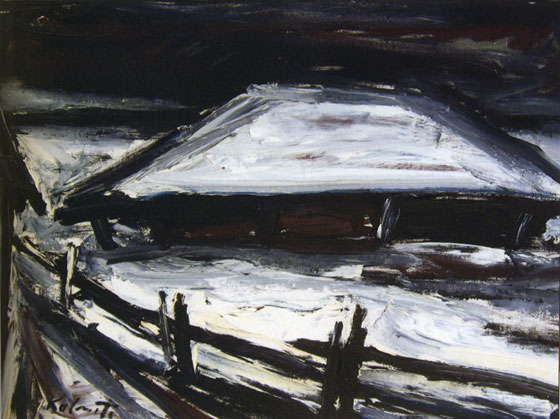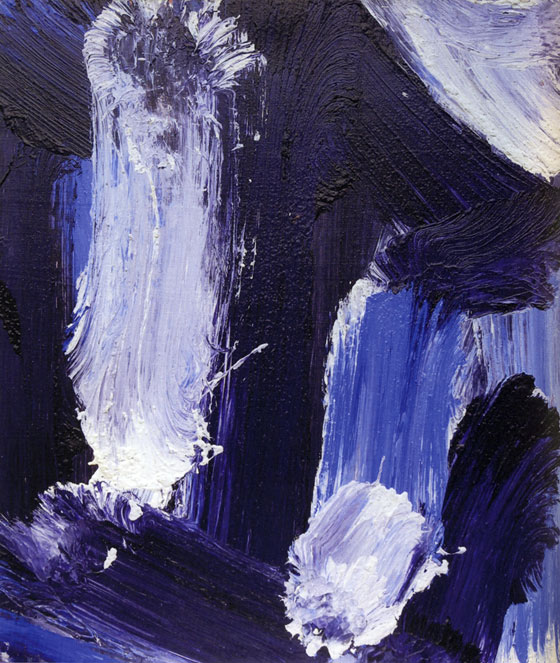|
|
 Looking at things from various perspectives Looking at things from various perspectives Stella Pelše, Art Historian Book On the One Hand... Reflections on Art in Exile by Nikolajs Bulmanis (Riga, 2010) | |
| This selection of previously published articles (1973–2007) by Nikolajs Bulmanis (1929), long-serving editor of the expatriate magazine Jaunā Gaita (‘New Path’), is diverse both in terms of subject matter and genre. First, there are reviews of exhibitions (both exile art shows and Venice Biennales and also, later, exhibitions in Latvia); second, monograph-like essays on specific artists. These include fairly popular figures who have also been seen at exhibition venues here (Vija Celmiņa, Edvīns Strautmanis, Raimonds Staprāns, Laimonis Mieriņš, and others), as well as less known names (Jānis Strods, Valda Ostreihere and Gundars Robežgruntnieks). There are also report-type materials, for example, a chronicle of exhibitions held in the church of St John’s parish in Toronto, or additions to the history of art societies in Latvia, providing details on the predecessor of the Mūksala artists’ society, the Ziemeļzieds [‘Northern Blossom’] group. The articles cover also the activities of expatriate organisations, analysis of the political dilemmas of the time (a joint front between conservative members of exile communities and Soviet functionaries to hinder contact-building) and sometimes sheerly provocative pro¬posals for art education and cultural policy (“What would be lost if Rozentāls Art School were to be liquidated?”, p. 341). Still, Bulmanis is first and foremost an art critic with a laconic, clever style which elegantly links the formal structure of works with the outline of emotional impact, forgetting neither the context of Latvian art history (connections with occurrences from the pre-war period and earlier) nor the dynamics of processes in Western art of the time. | |
 Jānis Kalmīte. Barn. 1959 | |
| The range of art terms which Bulmanis uses is rather attractive, for instance, the Latvian term for ‘readymades’, already now well-established, and, following the same pattern, the Latvian term for objet trouvé; there is also an interesting coining for everyday objects in a pop art context. At the same time, of course, the texts also contain inadvertent loanwords from the English, evidence of pressure from the dominating language. The most problematic area of the book is that of illustrations: two insertions of colour illustrations (mostly from the author’s private collection) certainly give some idea of what has been described, however still leaving obscure the visual angle of some artists’ achievements. This is the case, for example, with Ruta Grāvleja, whose installations elicited the author’s most significant artistic experiences, earning elaborate reflection. Without a visual clue, the nuanced analyses of works can become meaningless; some help for the more determined reader is provided by the list of artists at the back of the book. | |
 Edvīns Strautmanis. Pako Devu. 1990s | |
| Throughout the book there is criticism of the clutter and superficiality characteristic of expat Latvian art exhibitions (for instance, the unsatisfactory practice of holding song festival exhibitions at the preferred hotels, convenient however unsuitable for displaying art). In tune with Clement Greenberg’s classical arguments, Bulmanis wishes to keep alive the serious mission of high art: “...poor art, expelled from divine gardens, can bask cosily in the company of ornately decorated wooden plates, patterned pots and prettily woven skirts. And all that is stamped with the tritely well-known ethnographically-tinged seal of the ethnicists, where an equals sign links art and craftsmanship. Such equalizing degrades art and leads craftsmanship into the mendacious world of affected illusion.” (p. 62). What is it that Latvian art lacks? Back in the 1970s, at least, Bulmanis states with some fervour – it lacks avant-garde: “Good, serious, stable art, of course, is found also beyond the quest for the avant-garde, but only the avant-garde has power to add a new vector to art in a certain epoch, and only the search for a new direction ensures art with the necessary potential for renewal. Avant-garde art is not innovatory rioting for the sake of originality, but the first presentiment of a novel, deeper and more distant vision. The force that drives art.” (p. 64). The author’s notion of an avant-guarde artist appears to be somewhat modified in the 1990s, when writing about exhibitions hosted by the Riga Soros Centre of Contemporary Art, for instance, Jānis Mitrēvics’ piece of bacon in the exhibition titled Valsts (‘The State’): “In the present age of permissiveness, to hang out chunks of meat in a museum smacks of pushing at an open door with a pretty low rating of daring” (p. 450), which, however, might not be that low in the local context. The feeling that those pursuing non-traditional genres wish to usurp the status of true contemporary art makes Bulmanis come to a conclusion that “this art is elitist, and its proponents make up a closely interwoven network, held together by reciprocal joint consciousness and mutual admiration, effective in terms of the means supplied, but comparatively small as to its total size”(p. 452), on the other hand, “traditional genre art on the whole has deeper roots and greater stability. It is altogether more introvert, with greater potential of self-reflection, with a greater likelihood of achieving a more significant expansion of sublimation zones.” (p. 453). Be as it may, an ability to look at art from different viewpoints is undeniably the author’s strongest side, which guarantees a considerable dose of intellectual adventure for the reader. /Translator into English: Sarmīte Lietuviete/ | |
| go back | |







